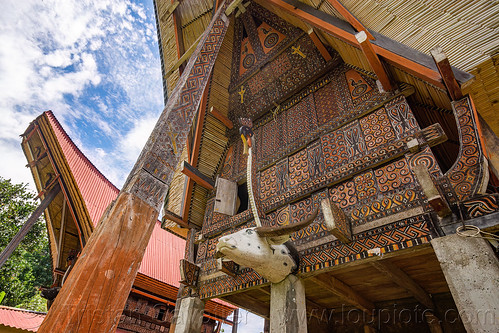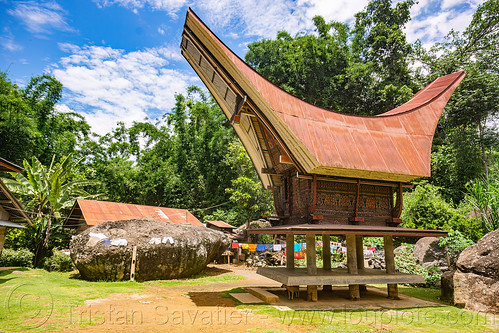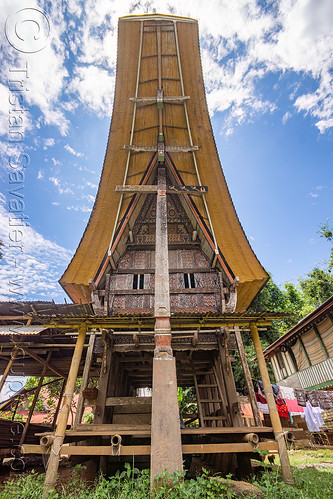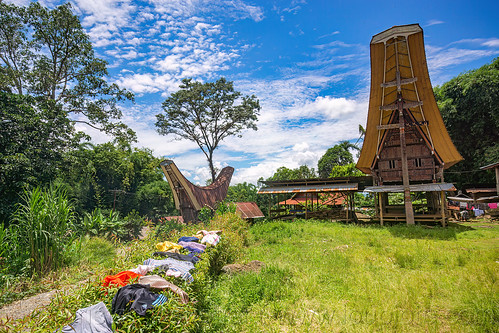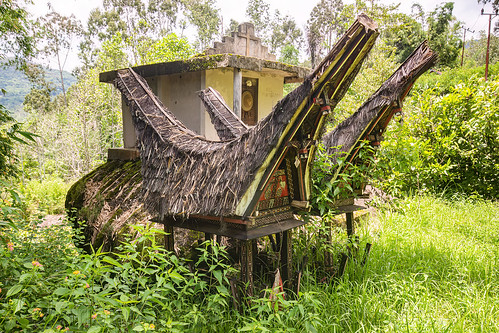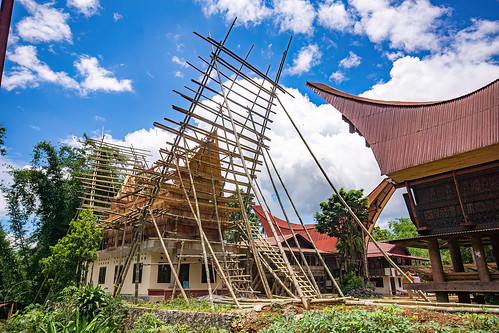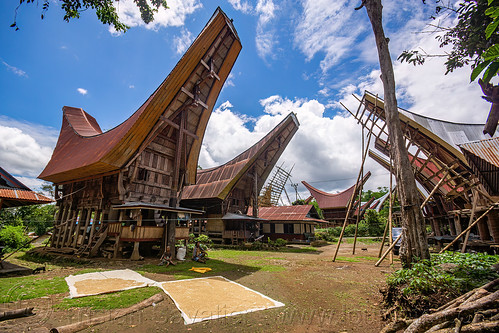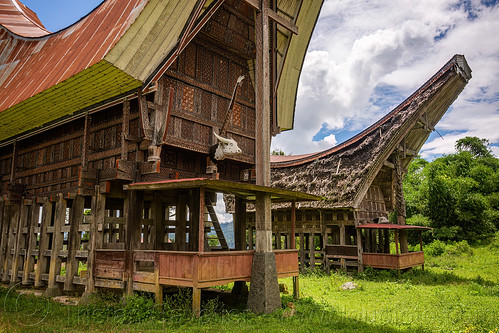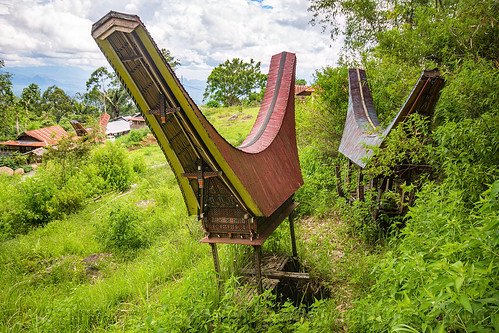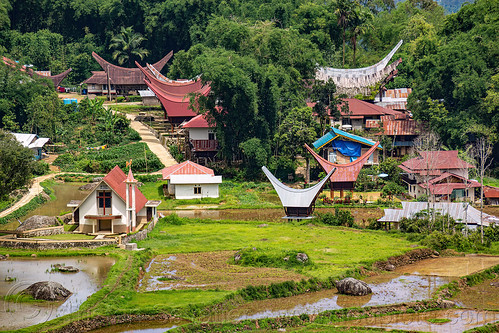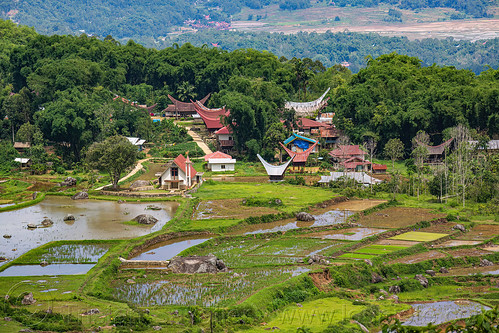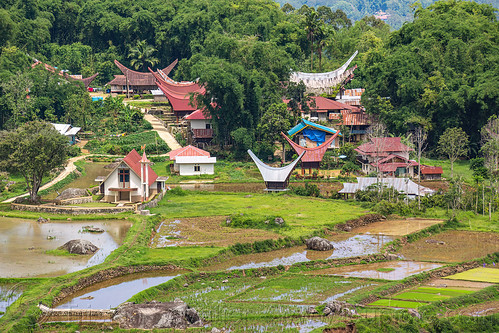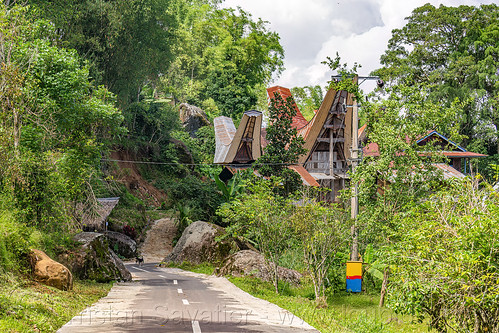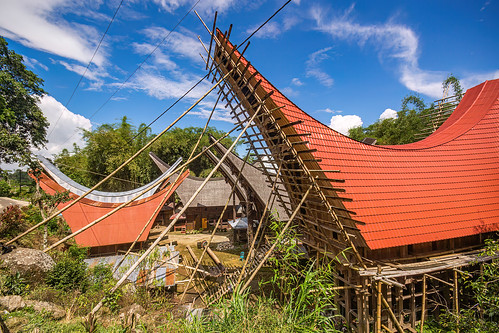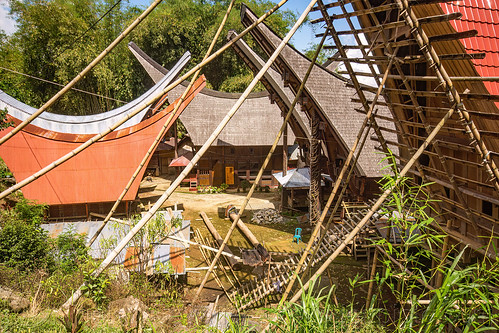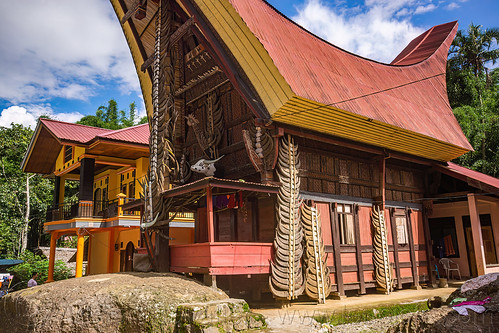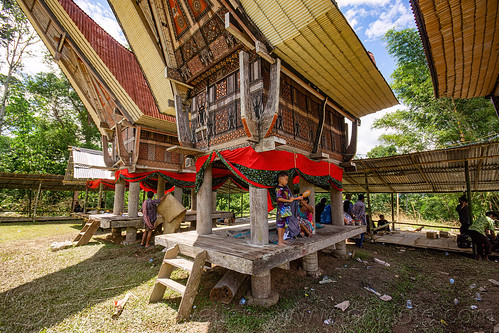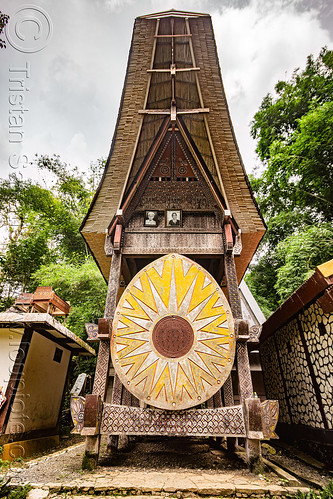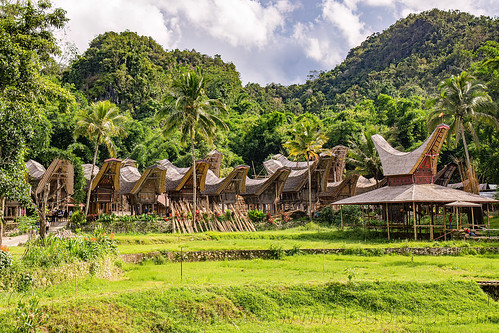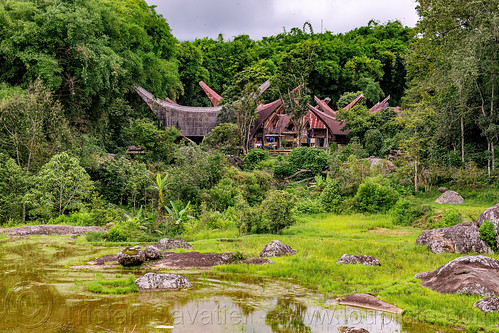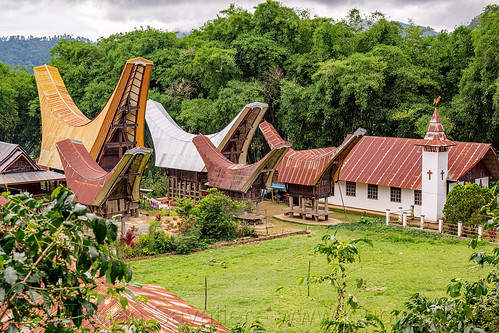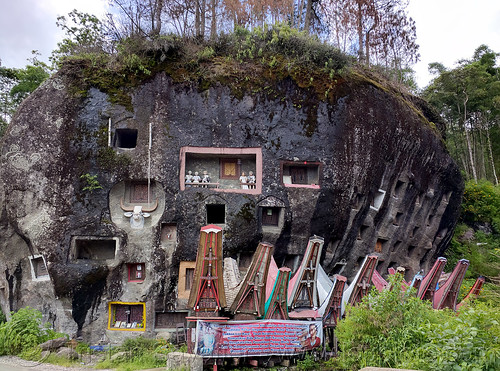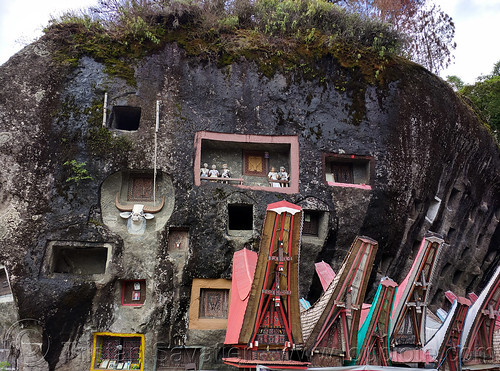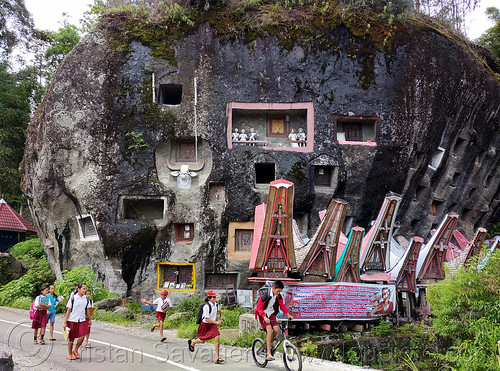toraja tongkonan traditional houses and rice granaries - 76 photos
Tongkonan is the traditional ancestral house of the Torajan people, in South Sulawesi Island, Indonesia.
Tongkonan have a distinguishing roof in the shape of buffalo horns. Tongkonan are built on piles.
Torajan people built rice granaries (alang-), usually right in front of their house, and both the house and the alang have the same Tongkonan roof, and are intricately decorated with Toraja symbols.
Some anthropologists say the structure of a tongkonan mirrors Torajans’ view of the cosmos, which is divided into an underworld inhabited by animals, a middle world inhabited by humans, and a heaven above. In a tongkonan, the bottom area among the pillars is traditionally used for stabling buffaloes, while people live in the house above, and the roof gables reach toward heaven.
Smaller versions of tongkonans are used for storing rice (the Torajans’ main crop), though they’re also built as status symbols. A collection of five or ten rice barns and one or two big tongkonans denotes a very wealthy family. Even-smaller versions of tongkonans are used as carriers to transport coffins for burial.
Tongkonans houses sometimes have poles with water buffalo horns.
Those buffalo horns are the "leftovers" - memorials - of funeral feasts and "feasts of merit" in which numerous buffaloes were sacrificed, whose horns decorate the houses today. The more horns, the more buffaloes were sacrificed, and the more important and respected the family is.
The horns (of previously sacrificed buffaloes) are typically displayed staked on a pole in front of the tongkonan family house.
See en.wikipedia.org/wiki/Tongkonan
More info about Tongkonan:














